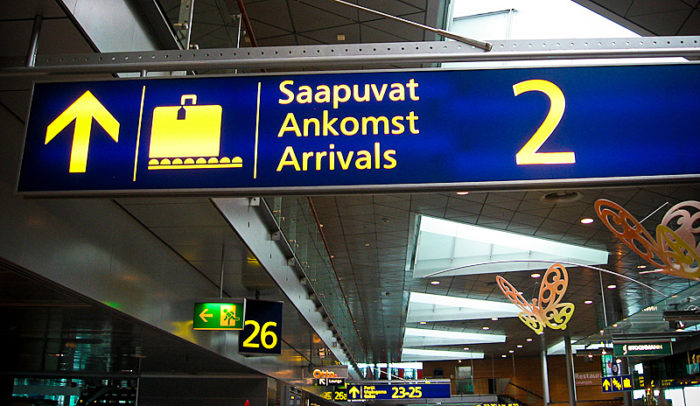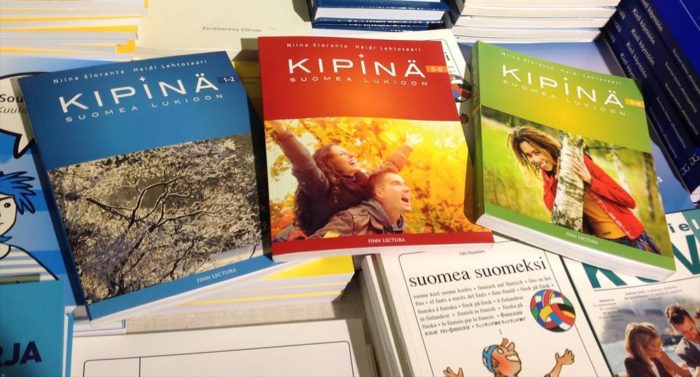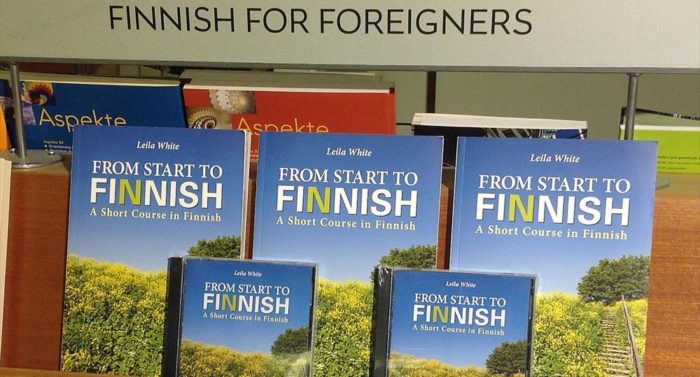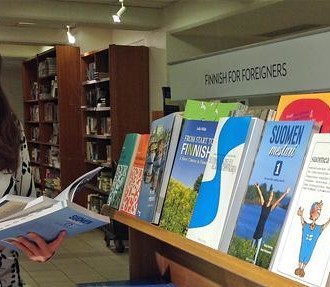Learning Finnish – it can be done. Just ask one of the ever-growing number of non-Finns who have gained proficiency in the language. An outgoing, positive attitude helps, and so does a good textbook.
In part two of what has become an enormously popular article (see part one), we talk to more friends and colleagues to find out what textbooks they like and what tried-and-true tips they recommend for mastering Finnish.
Don’t be afraid of mistakes

If you’re looking to speak Finnish, you’ve arrived in the right place.Photo: flickr/StillBurning, cc by nc 2.0
Marina from Italy: Suomen kielen alkeisoppikirja (Finnish language: A basic textbook) and its companion books, by Anna-Liisa Lepäsmaa and Leena Silfverberg (Finn Lectura) are, in my opinion, the most complete and systematic. I like the fact that they’re written only in Finnish. I think that’s the best system – that way you learn from context and begin to think in Finnish. I like the practical approach of Finnish for Foreigners with its dialogues and its vocabulary section. I found the dialogues on the CDs very useful. Kato hei – puhekielen alkeet (Look: Beginning colloquial Finnish) by Maarit Berg and Leena Silfverberg (Finn Lectura) and the accompanying CD are very useful for learning the basics of colloquial (informal or spoken) Finnish. It’s very useful to learn how to write correctly in Finnish. A thin book made especially for non-Finns can serve as a reference: Tarkista tästä (Check it here) by Hannele Jönsson-Korhola and Leila White (Finn Lectura).
Marina’s tips: It’s important to start by learning Finnish grammar, but don’t focus on that alone. Read Finnish and listen to people speaking Finnish or, if you don’t live in Finland, use CDs or the internet. Don’t be afraid of making mistakes when you speak, and when you’re in Finland try to speak as much Finnish as possible!
Talk as much as you can

“Kipinä” (Spark), a textbook series for Finnish high school kids, offers students of Finnish the chance to challenge themselves and expand their horizons.Photo: thisisFINLAND
Nicola from Italy: Hyvin menee (Doing well) by Satu Heikkilä and Pirkka Majakangas (Otava) contains the basics and describes situations that you may find useful in Finland: the market, the seasons or the doctor’s office. Following short dialogues or texts, the book analyses and reviews the grammar and offers exercises. Because it is only in Finnish, I recommend taking a course at the same time. Kipinä 1–2 – suomea lukioon (Spark 1–2: High-school Finnish) by Niina Eloranta and Heidi Lehtosaari (Otava) is a new and very interesting book, so you can even discuss it with colleagues on your coffee break. Grammar is presented by means of current topics such as immigration, music, design, sauna and many others. In order to make the most of this advanced-level book (it is actually a Finnish textbook for Finnish-speaking high-school students), you should already know the basic rules, cases and vocabulary.
Nicola’s tips: In my experience, learning Finnish is a process that takes some years, maybe just a couple if you are very motivated. How do you speed up this process? Of course you need to learn the basics during your initial phase. Other than that, speak and listen. Try to talk as much as you can. Movies and news are a great help. Finns appreciate it when somebody tries to speak their language, no matter how many mistakes you might make. In the end you’ll find out that it’s about not only learning a language, but discovering a culture and a way people think.
If you’ve got it, use it

Spoonful of sugar: The red one or the blue one? Blue and white are the colours of Finland, of course.Photo: flickr/frech, cc by sa 2.0
Matthieu from France: Kieli käyttöön (Putting language to use) by Marjukka Kenttälä (Gaudeamus) is a Finnish textbook in Finnish. That’s the best way to immerse yourself in the Finnish language. You may need to ask a Finnish person for help, but only in the beginning. Each lesson offers clear explanations and the vocabulary can be used directly in conversation. After finishing the first book, you’re already able to accomplish small conversations. A Grammar Book of Finnish by Leila White (Finn Lectura) forms a good addition to improve individual grammar points.
Matthieu’s tips: Don’t be afraid to speak Finnish, and continue to speak it even if people start to speak English to ease the conversation. As Finnish words are really different from other languages, learn them by heart and repeat them again and again.
As easy as 1, 2, 3

“Start to Finnish” contains useful dialogues and some handy colloquial words.Photo: thisisFINLAND
Anke from Germany: I learned Finnish with the book Yksi, kaksi, kolme: Finnisch für Deutschsprachige (One, two, three: Finnish for German speakers) by Senja Riekkinen-Gebbert (Hempen). You can learn the language with this book, but I found that it uses a more formal language than regular people in Finland. Later I used From Start to Finnish by Leila White (Finn Lectura) and I really liked it. The dialogues in the book are useful for the first conversations in a new country. It also contains some colloquial words, which comes in handy.
Anke’s tips: In my opinion it’s hard to learn Finnish, but not just because of all the double letters in the written language. It’s more about practicing. If you start speaking Finnish with a Finn, they may recognise that you’re not Finnish and, since they’re friendly people, they switch to English. But use your Finnish and don’t get discouraged! (Intermediate Finnish 101) (Intermediate Finnish 102) (Intermediate Finnish 103) : Free downloadable audio files and Finnish-English wordlist
Compiled by Peter Marten, Sabrina Salzano and Sara Vihavainen, April 2014








